Pictured: Intel Project Alloy VR HMD
Although we at IDF 2016 were treated to some onstage demos of Intel’s new Project Alloy VR HMD, Intel was not actually showing the headset to anyone. There were no Alloy VR demos in private sessions that we could see for ourselves.
In light of the lack of demos, we at least wanted to see the Thing itself, but the HMD was present on the show floor only under glass. I also managed to snap a couple of images after a session (I had only a few moments before an attendant screamed at me not to touch it.)
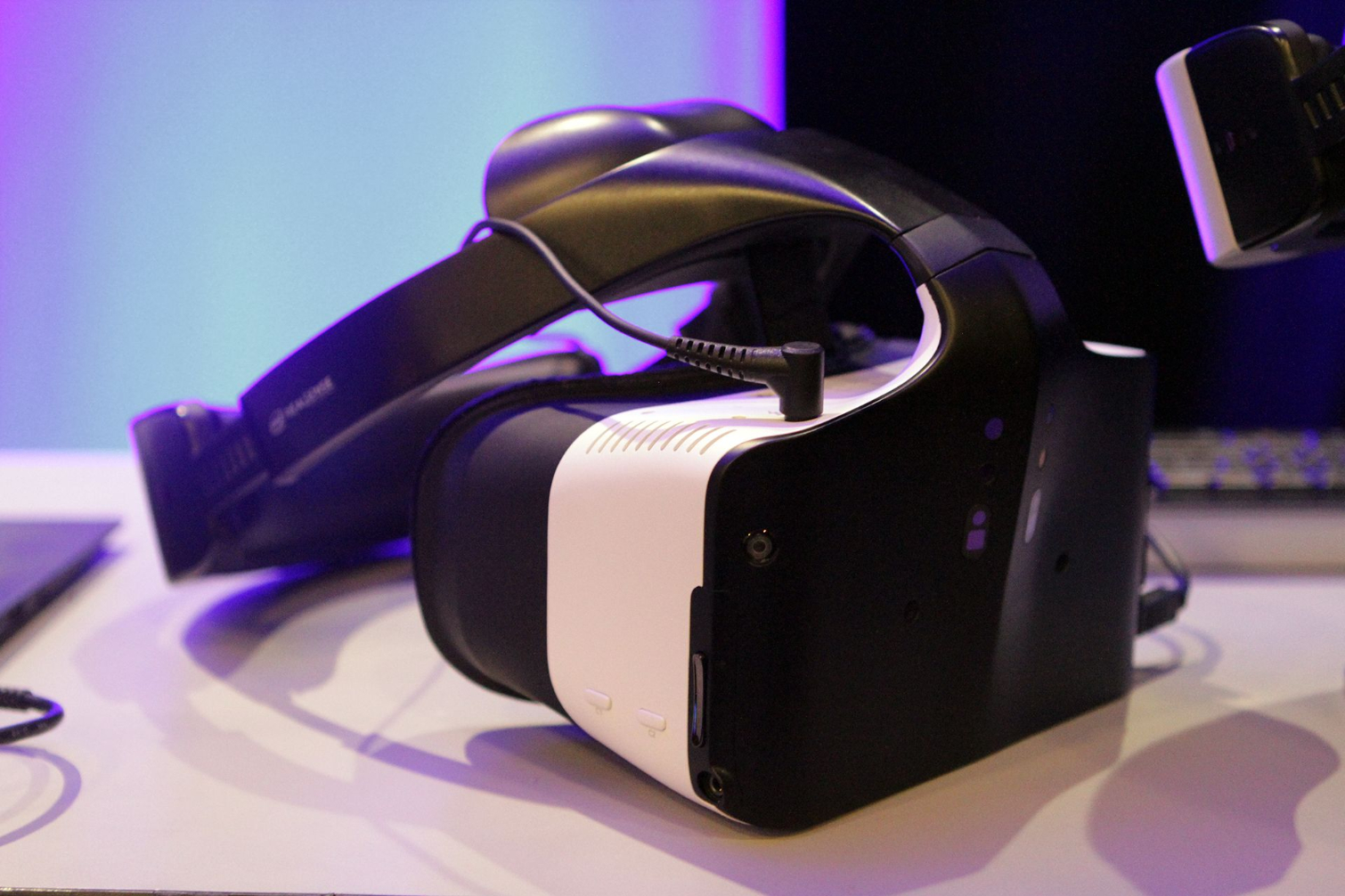
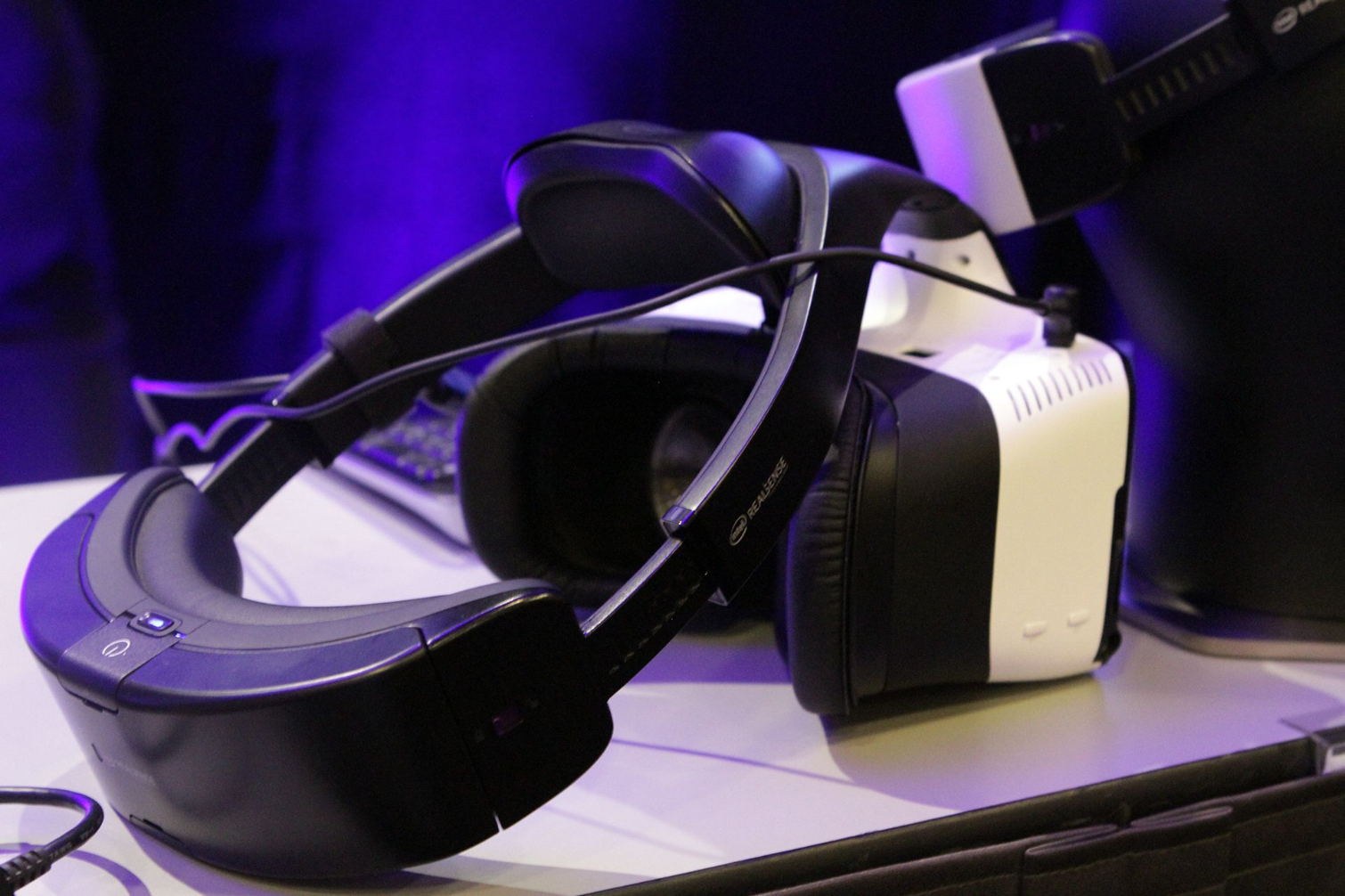
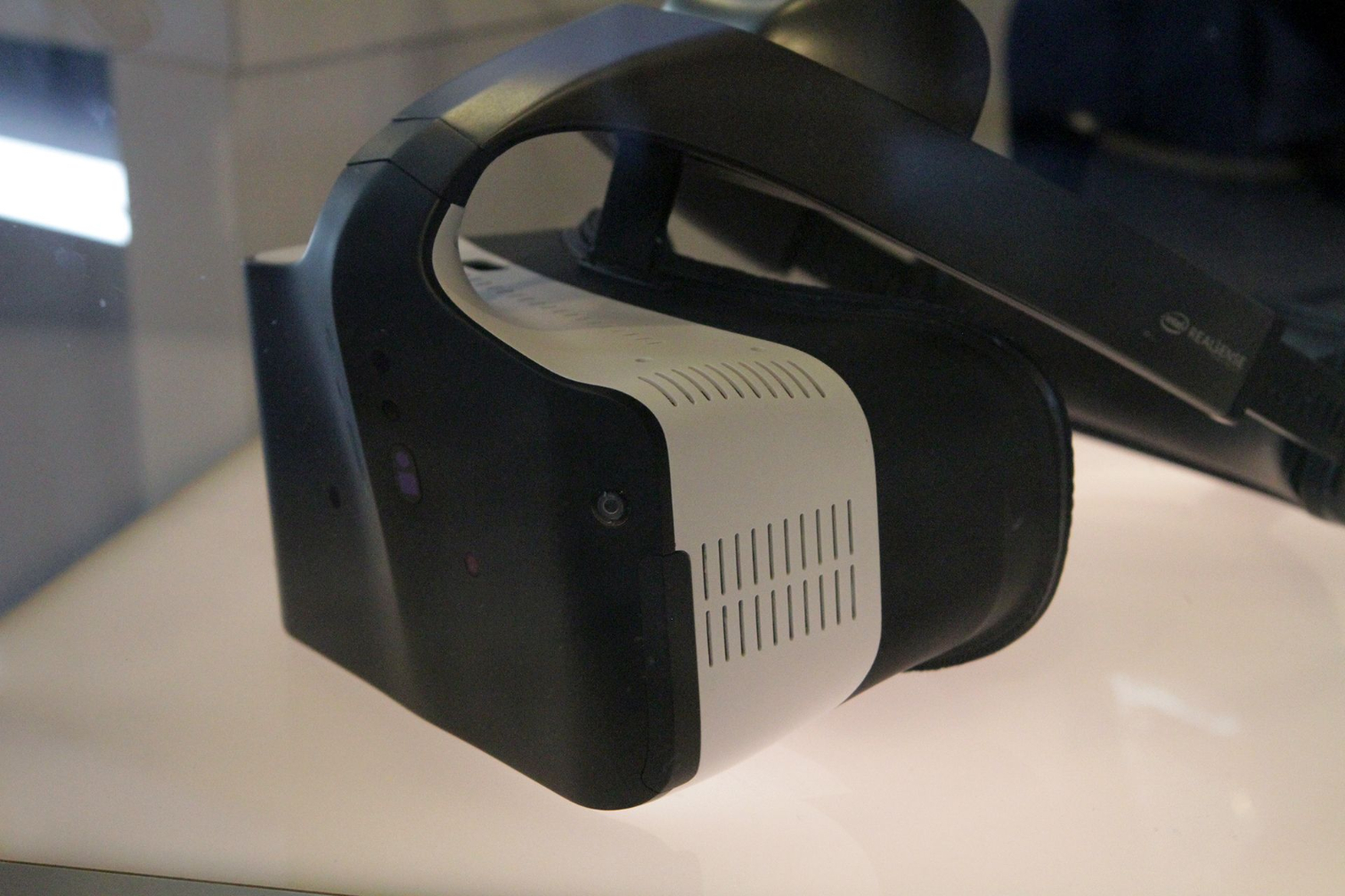
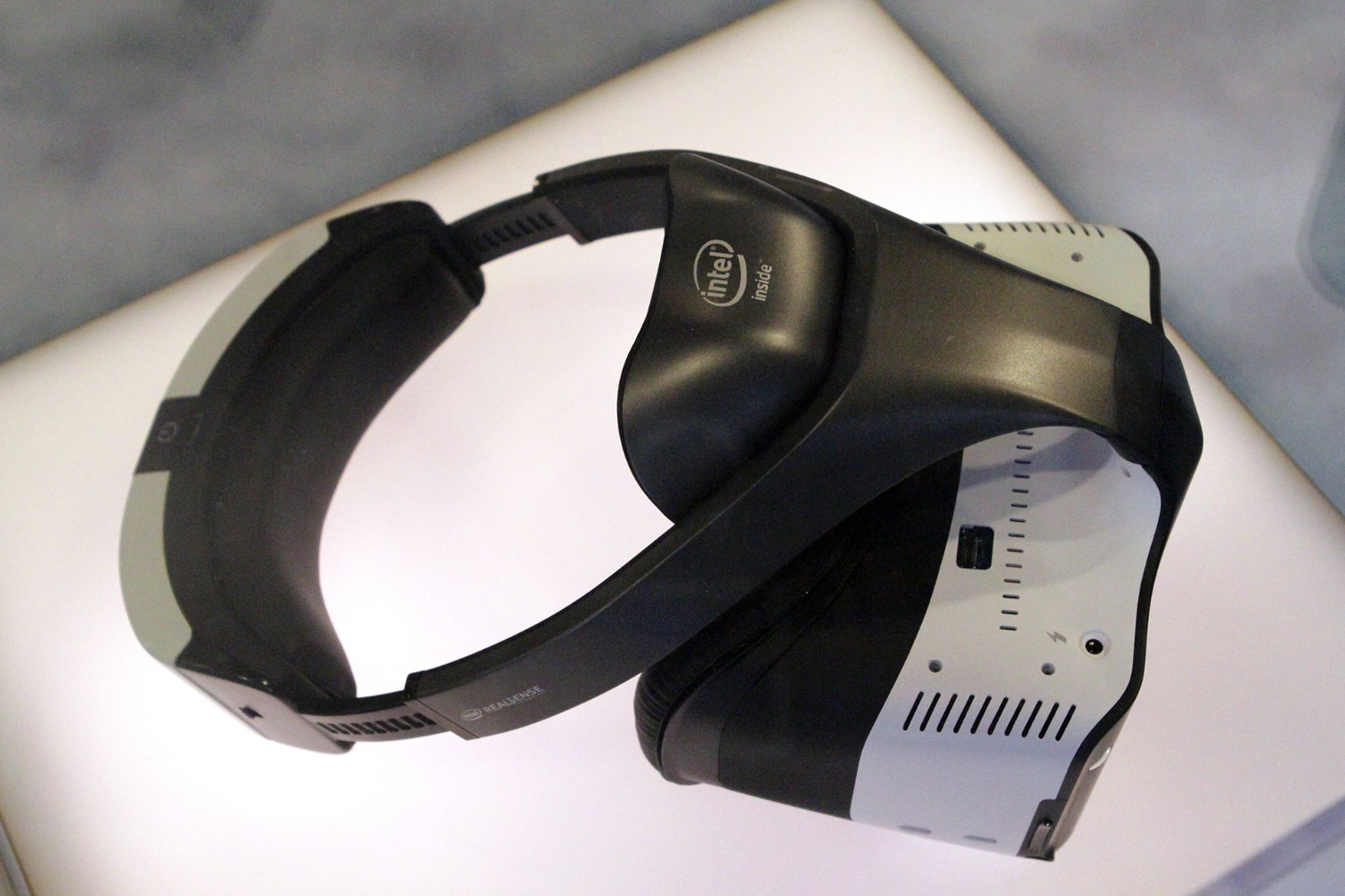
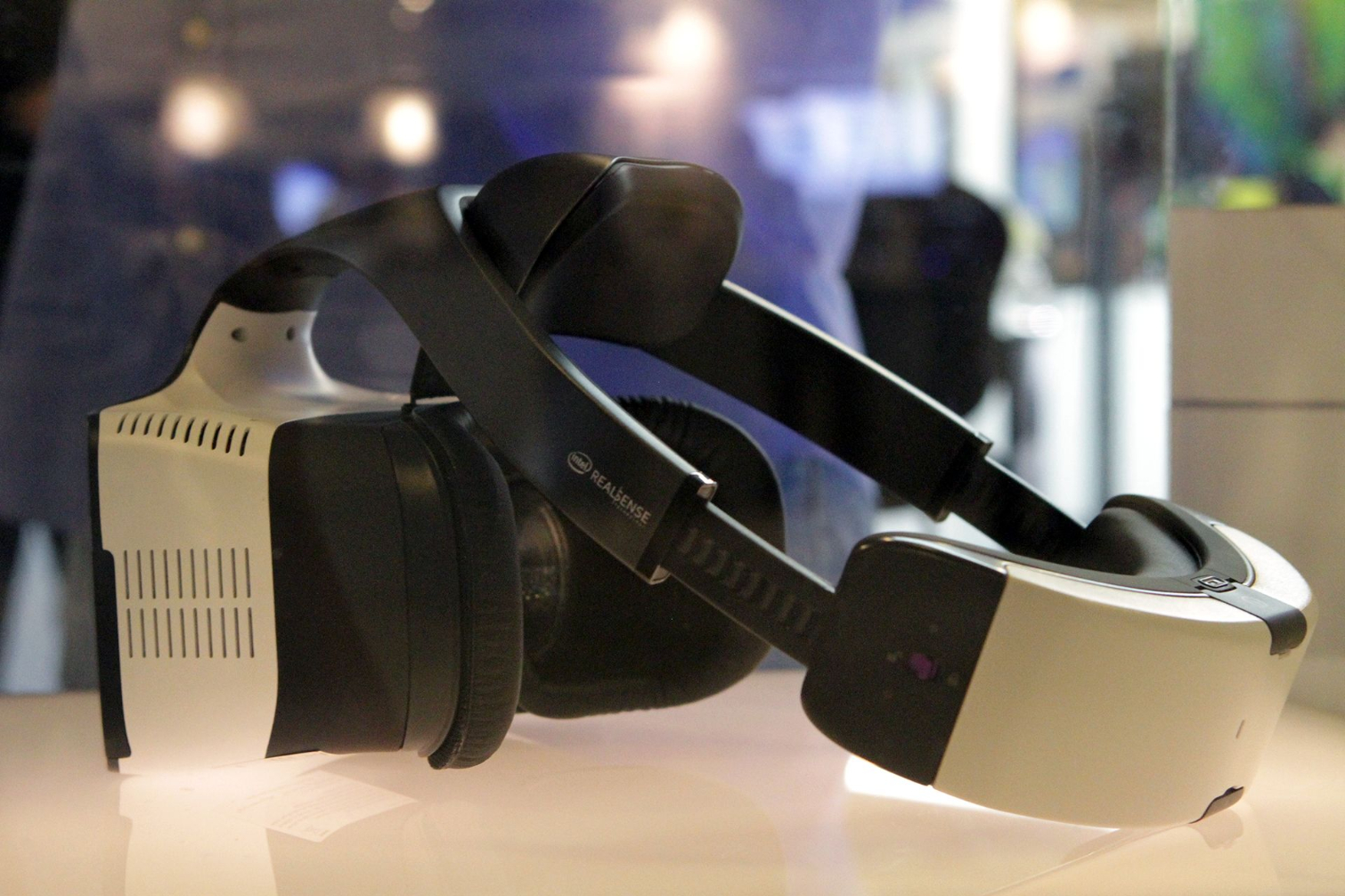
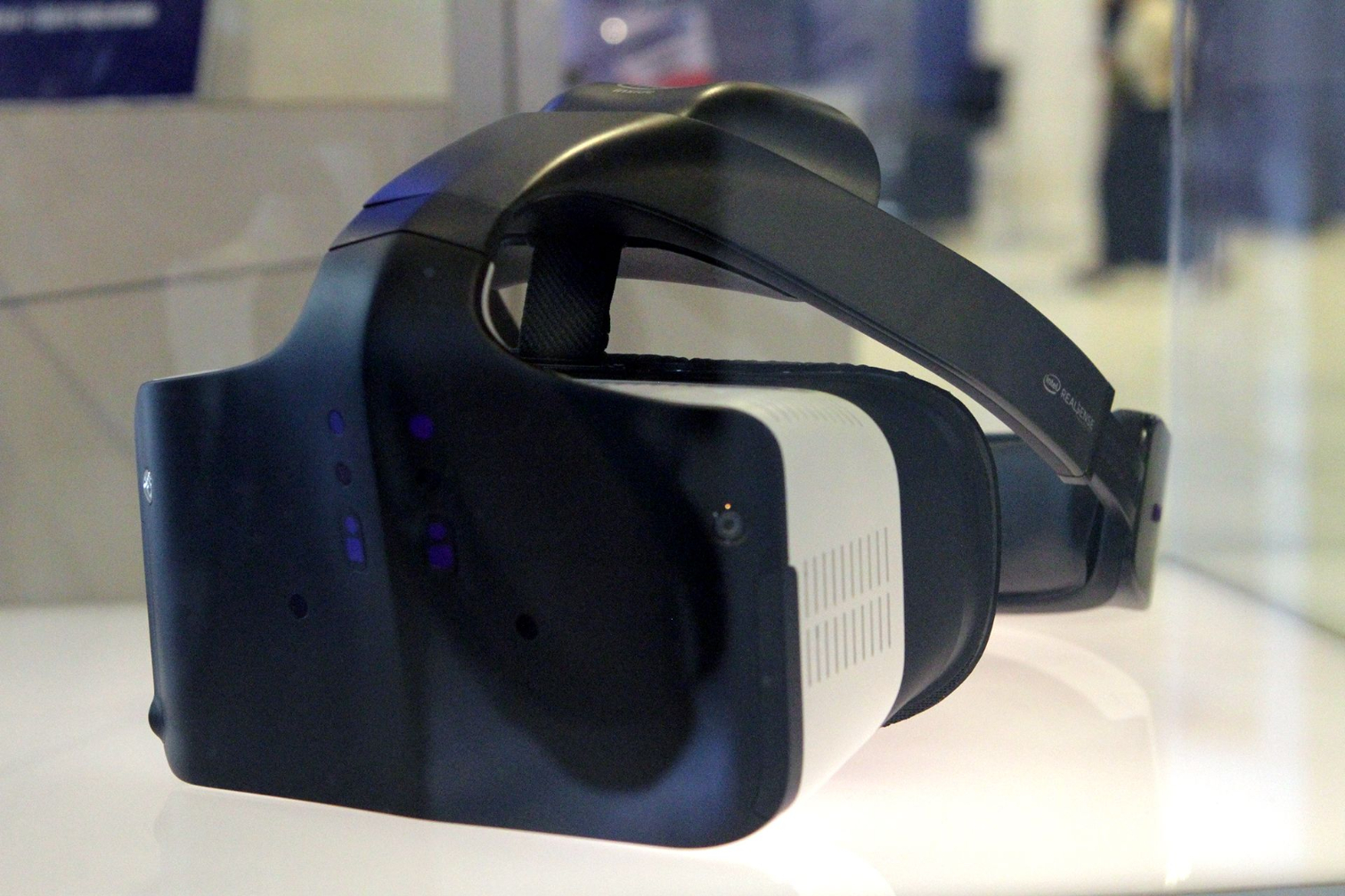
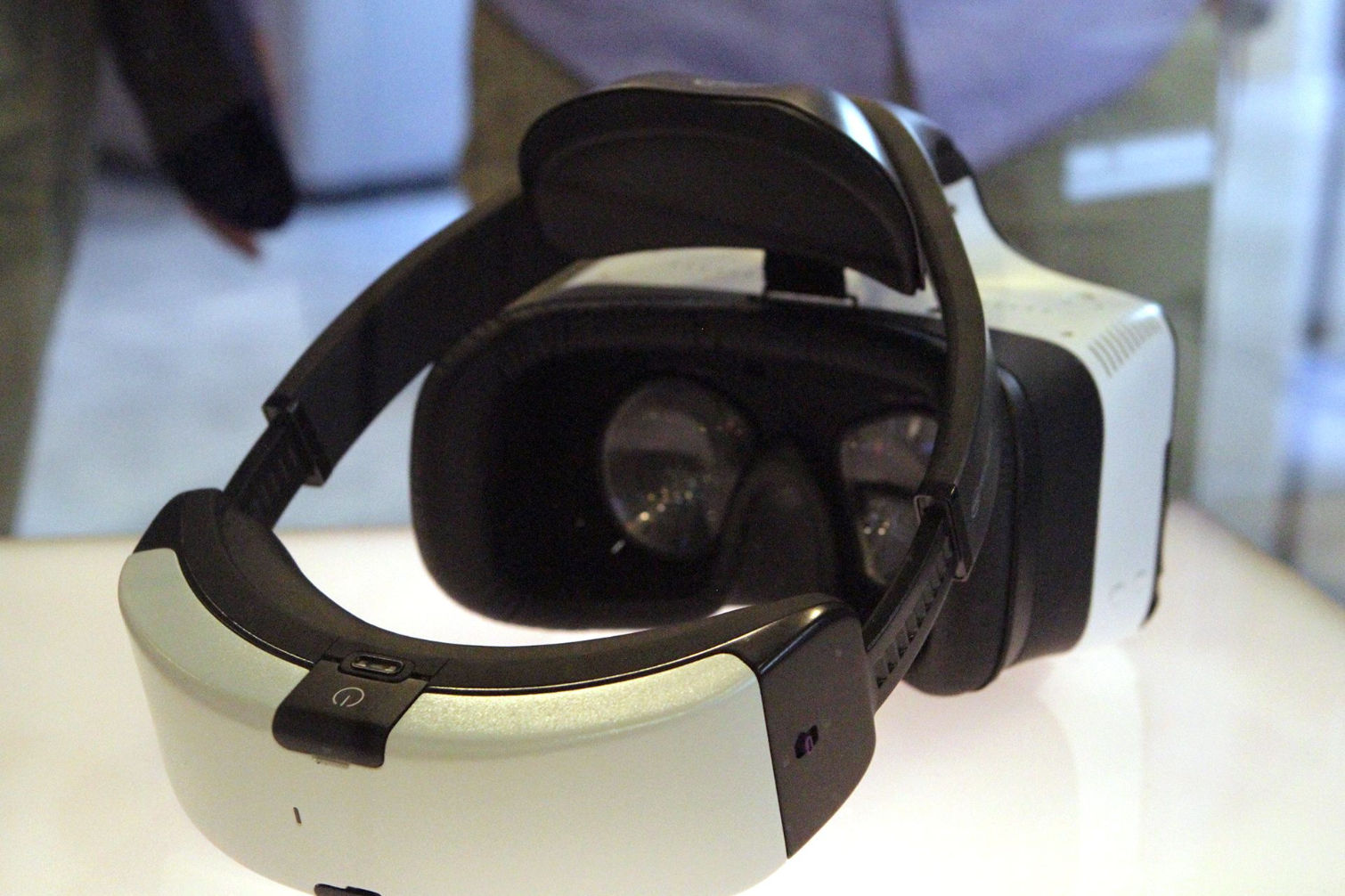
Although we’ve written about it at this point, there is still much we don’t know about Project Alloy. Having seen the HMD close-up, though, what struck us first was how large the thing is. Granted, there’s a whole PC in there, plus a RealSense camera, plus some other unspecified internals, but it’s certainly larger than a Rift or Vive.
Note the venting on the sides; we believe those are for dissipating heat, although because we weren’t close to one that was operating, we can’t be certain. If you look closely on the front of the HMD, you’ll note the subtle presence of the RealSense 400 Series. (It may be two RealSense camera modules, actually.) Just like the HTC mockup we saw earlier this month, it appears to have six cameras. It appears that there are some other cameras or sensors on the faceplate as well.
The head strap looks to be similar to the HoloLens, in that it’s not elastic but tightens more like a baseball cap does. However, there is padding on the large piece that will rest on your forehead (not unlike the PSVR), and the rear strap has foam-looking padding, as does the face cushion.
There’s a standard laptop-type power jack on top of the HMD, and there’s another port nearby that looks like it could be USB. The back strap has the power button. There are also two small white buttons on the right side of the HMD; it’s unclear what these are for, but it looks like they could be for navigation. (Other wild, baseless theories are welcome in the comments below.) Next to those buttons is what looks like a volume rocker-type button. There’s another mystery port (or we suppose it could be a sensor) below that.
We will continue to press Intel for more information on Project Alloy (the project) and Project Alloy (the VR HMD).
Get Tom's Hardware's best news and in-depth reviews, straight to your inbox.
Seth Colaner previously served as News Director at Tom's Hardware. He covered technology news, focusing on keyboards, virtual reality, and wearables.
